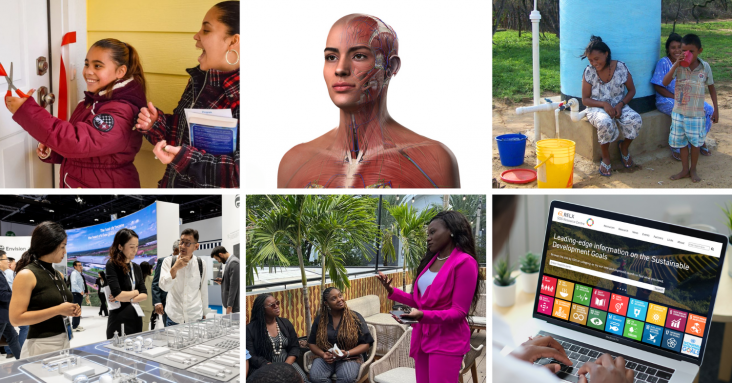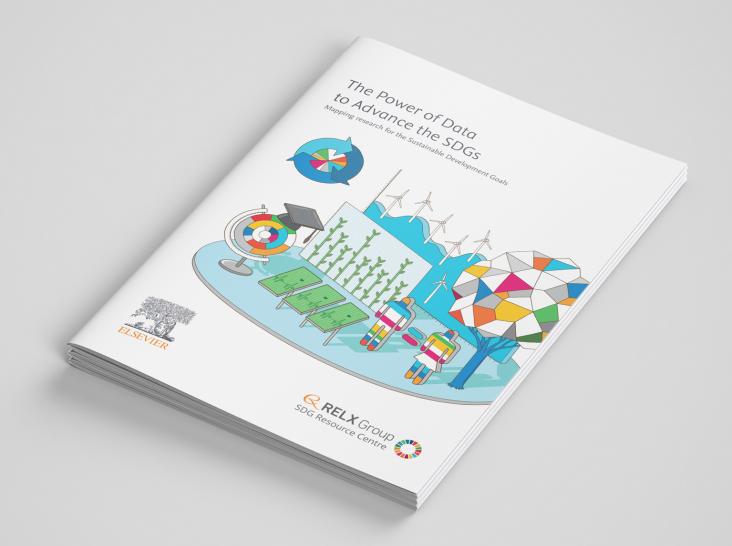The authors evaluate shifts in water reservoirs (i.e. atmospheric versus terrestrial and underground water storage). Projections indicate water storage deficits in most Southern Hemisphere basins during the summer.

As we pass the halfway point for the SDGs, many of the goals are worryingly off track and progress on 85% of the target indicators has stalled or even reversed. Through our information, products and people, RELX remains committed to advancing the Goals. Here are some of the ways that we continue to support their achievement.

Access to information is critical in achieving the SDGs - empowering the public to make decisions, informing policy making and enabling effective implementation and monitoring. RELX businesses regularly produce and publish free to download reports and analytics that draw upon vast amounts of information and data in support of the SDGs. Explore some of the reports and tools developed to date.
This article explores how assuming lower economic growth ratesaligned with secular stagnationbroadens feasible climate mitigation pathways consistent with 1.5°C2°C warming, reducing reliance on unprecedented low-carbon infrastructure buildout. However, lower growth raises concerns about equity and stability, highlighting the need to evaluate novel post-growth policies in future scenarios.
Hydrogen holds significant promise as a clean energy solution across various sectors, offering emissions-free energy generation and transportation.
Food insecurity among Indigenous peoples in Canada is a significant public health issue, impacting all four pillars of food security: availability, access, utilization, and stability. A literature review identified 91 studies indicating that economic disadvantages, high food prices, lack of transportation, and climate change are major contributors to food insecurity. Traditional food systems are disrupted by loss of knowledge, poor food quality, and food safety concerns. Addressing these issues requires culturally specific integrated approaches to improve food availability, cost, knowledge, and quality.
This study used the SBASInSAR technique to measure long time-series land subsidence in and around Ludhiana city, Punjab, India, and found that the southern, south-eastern, and south-central parts of the study area had been consistently subsiding with an accumulative average land subsidence rate of 24.7 mm/yr during the investigation period from September 2019 to July 2022, while the western and eastern parts were moderately affected, and the northern part experienced slight upliftment.
This article links to the United Nations Sustainable Development Goals (SDGs) by addressing Goal 12 (Responsible Consumption and Production), highlighting the urgent need for effective management and reduction of tobacco product waste, which poses significant environmental hazards. By advocating for policies that classify tobacco waste as hazardous and emphasizing the importance of extended producer responsibility, the article underscores the necessity of holding tobacco companies accountable for their environmental impact, thereby contributing to sustainable practices and protecting marine and terrestrial ecosystems.
This article ties to SDG3 by examining new methods to assess impact of climate change

Plants have a microbiome, a diverse community of microorganisms, including bacteria, fungi, and viruses, living inside and on their tissues. This review article contains deeper insight in endomicrobiome related research work in last years, recruitment, niche development, nutrient dynamics, stress removal mechanisms, bioactive services in plant health development, community architecture and communication, and immunity interplay in producing stress resilient future crop.
